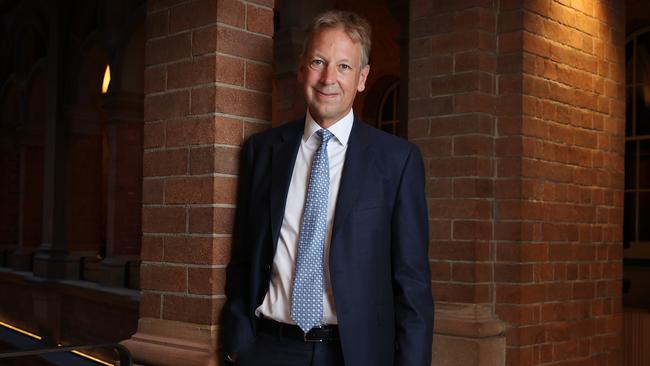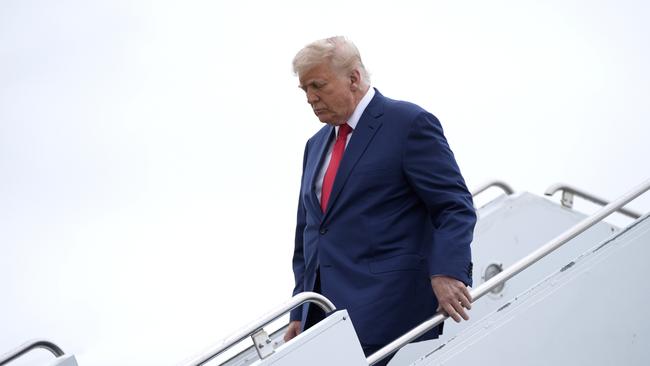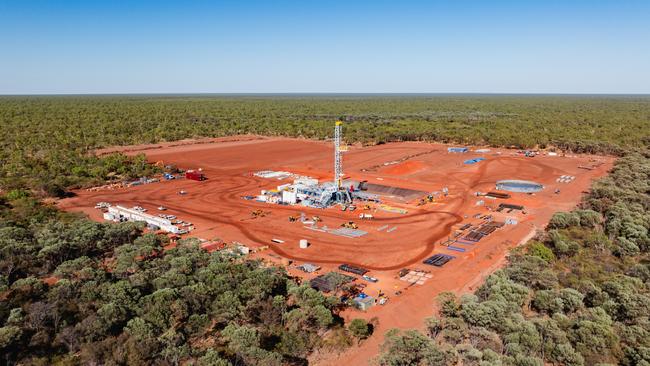Rio Tinto exposes truth about expensive renewable energy, which can only be offset by LNG gas
It is a national tragedy the election debate got sidetracked with nuclear when the high cost of energy was replaced by slogans saying renewables are cheap, which was simply not true.

Business
Don't miss out on the headlines from Business. Followed categories will be added to My News.
Thank you, Rio Tinto, for telling the nation the truth about the cost of renewable energy. Now the election is over, we can strip away the slogans, half-truths and misstatements and look squarely at how on earth we organise the nation’s energy future.
Independent of the Rio Tinto “truth telling”, most of the states have now woken up to the fact they need gas — urgently. We have enormous potential gas reserves in Victoria and Beetaloo gas in the Northern Territory is also available within two years, but it looks as though we will take the high-cost option, import LNG and take the Beetaloo slow road.
The truth is, the actions of the Victorian and NSW governments have created a crisis which can only be mitigated by importing high-cost LNG gas. Victorians will have the option of choosing low-cost gas on polling day in November 2026. Given the political issues, it is easier to forget the cost and import essential gas than open new fields.
Sadly, truth telling about the costs of renewables and imported gas has to be gradual, given the previous political misstatements.
Rio Tinto has set out clearly that the high-cost of renewables plus the rising cost of coal energy, due to the lack of investment, makes its enormous Tomago aluminium smelter in Newcastle uneconomic.
Rio is also the part-owner of the Boyne Island aluminium smelter near Gladstone in Queensland and the Bell Bay smelter in Tasmania. Alcoa owns the Portland smelter. All face the same issues.
The Tomago smelter employees directly and indirectly about 6000 people so if Australia wants to keep it running, we have to give it sufficient subsidies so it can compete with low-cost energy countries like the US and Canada.
We can call the subsidies all sorts of names like carbon credits, and sometimes the subsidies are actually paid by other parts of the private sector.
But, thanks to the truth telling by Rio Tinto, while calling subsidies names might fool gullible Australians, it won’t fool US President Donald Trump. He will put high tariffs on Australian aluminium exports on the agenda.
Trump’s desperation for terbium and other vital heavy earths may enable Australia to lower its US aluminium tariff. Similarly, huge subsidies are being given to consumers to conceal the high cost of renewables.

Now we know the truth, we must ask ourselves why is renewable power so costly when the energy from the wind and the sun is “free”. This question was never asked nor answered in the election campaign.
Firstly, enormous investment is required in solar panels and windmills. When placed on the roof of a home or factory this can be economic, but where you generate renewables a long way from where they are consumed, high-cost transmission lines are required.
Worse still, the life of the investment in windmills and solar panels is in the vicinity of 15 years, so every 15 years you have to replace the investment. Coal, gas and nuclear power stations have much longer lives.
In addition, whatever you generate in renewables requires a backup to cover the times when there is no power from renewables, like night-time in the case of solar.
That backup can come via hydro, batteries, gas, coal or other avenues. Coal is a very expensive backup because coal power runs best on a 24-hour cycle, and turning the supply dial up and down is both costly and plant damaging.
In simple terms, you need twice as much generating power to cover the “downtime”. And then every so often people talk about offshore wind projects which are enormously costly. The Rio Tinto “truth telling” shows we have set ourselves carbon reduction targets which don’t take into account the cost of non-carbon energy generation.

We have just had an election where we cut our nuclear as an option. In some ways that might not be a bad thing, because the technology being applied to nuclear is very exciting and in a couple of years it may be possible to install nuclear power stations using better and lower cost technologies which are much more economic.
The Chinese are way ahead of us in this area and are particularly skilled at molten salt-cooled thorium stations. Nuclear fusion also has great possibilities, as do smaller nuclear stations to cater for particular markets.
What we should be doing is replacing coal with gas power, which can be switched on or off — which is very compatible with renewables — and then prepare ourselves for better technology in nuclear in a few years’ time.
The coalition didn’t understand that what was required was the removal of the ban, so private enterprises could erect nuclear stations where it made economic sense.
Even with present technology, it is economic to drive a data centre on a smaller nuclear power station.
Sadly, Australia’s renewables cost concealment has been duplicated in other parts of the world and conferences have set quotas not possible to achieve without huge subsidies. And, the process has soured the whole carbon reduction debate.
Australia can only afford these massive subsidies if we continue to gain huge revenues from carbon exports like gas and coal plus iron ore, which requires carbon to make steel.
We are engaged in an exercise designed to fool us. In a truth telling world, targets require new technologies, and not just nuclear technologies. Rather than wait for these technologies, we are installing a high-cost power system concealed with unsustainable subsidies.
Meanwhile, we face severe shortages of gas, particularly in Victoria and NSW because of our failure to develop reserves in those states. We probably will be able to cover some of it from new fields in Queensland and South Australia, but most of it will come via high-cost LNG.
This will not be subsidised, therefore it will make Australia a very high-cost industrial nation. We are simply not going to get investment in Australia once it becomes known we have unreliable and high-cost energy. It is a national tragedy the election debate got sidetracked with nuclear when the high cost of energy was replaced by slogans saying renewables are cheap, which was simply not true.
More Coverage
Originally published as Rio Tinto exposes truth about expensive renewable energy, which can only be offset by LNG gas





